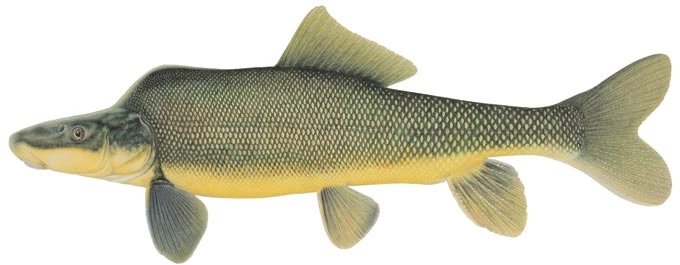
Illustration by Joe Tomelleri
Razorback sucker (Xyrauchen texanus) Status: Endangered The razorback sucker was thought to be extirpated, or locally extinct, from Grand Canyon until 2012 when several adult razorback suckers were captured in the western Grand Canyon during surveying work. Prior to these occurrences, razorback suckers were last found in Grand Canyon more than 20 years ago. Recently, they have been found spawning in the Colorado River inflow at the upper end of Lake Mead. The National Park Service is currently planning studies to determine the status of the species in Grand Canyon. Razorback suckers have a bony keel on their backs. They are the largest species of suckers that live in the Colorado River and reach and maximum length of 36 inches (900 mm). They may live 40 years or more. They feed on a variety of insects, crustaceans, and detrital matter. Prior to the constructions of dams on the Colorado River and other human-caused alternations to their habitat, razorback suckers were widely distributed in the Colorado River and its major tributaries, and were typically found in calm flat-water reaches. There are at least ten historical records of razorback suckers caught in Grand Canyon, including a specimen caught in Bright Angel Creek in 1944. Today, the largest population, and possibly only population of wild reproducing razorback suckers, is in Lake Mead. The species was listed as endangered in 1991. Critical habitat, including all of Grand Canyon National Park, for the species was determined in 1994. |
Last updated: February 24, 2015
